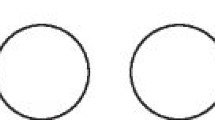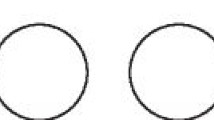Abstract
Data sources
Medline, Embase, The Cochrane Central Register of Controlled Trials (CENTRAL) and the reference lists of identified studies.
Study selection
Human controlled or randomised clinical trials and animal studies reporting occurrence of gingival recession and crown length changes were included. Case reports, descriptive studies, review articles, opinion articles and studies concerning impacted teeth or injured anterior teeth, pre-orthodontic treatment for dental restoration and those limited to severe periodontal diseases or craniofacial anomalies were excluded. Articles in any language were considered.
Data extraction and synthesis
Data were recorded on specially designed data extraction forms and the studies were graded with a score of A–C (Grade A: high value of evidence, Grade C: low value of evidence) according to predetermined criteria, and a narrative synthesis presented.
Results
17 articles were included: six experimental animal studies and 11 retrospective clinical studies in humans. More proclined teeth compared with less proclined teeth or untreated teeth had in most studies a higher occurrence or severity of gingival recession. Contradictory results were found regarding a possible statistically significant correlation between the extent of gingival recession and the amount of incisor proclination during treatment, width of attached gingiva, hygiene, periodontal condition or thickness of the symphysis.
Conclusions
There are no high quality animal or clinical studies on this topic. Movement of the incisors out of the osseous envelope of the alveolar process may be associated with a higher tendency for developing gingival recession. The amount of recession found in studies with statistically significant differences between proclined and non-proclined incisors is small and the clinical consequence questionable. Because of the low level of evidence of the included studies, the results should be considered with caution.
Similar content being viewed by others
Commentary
The issue of incisor proclination outside their “normal” dentoalveolar envelope as a source of gingival recession has been discussed for years. Fixed class II correctors have been commonly criticised for “dumping” the lower incisors forward in an attempt to camouflage large overjets frequently associated with class II division 1 malocclusions. This review offers the first organised attempt to shed some light on this topic. Commonly accepted guidelines to conduct systematic reviews were followed. Although it is broadly believed that lower incisor proclination leads to gingival recession, there are very few clinically studies that have actually investigated this and unfortunately the review results are not clear cut. Although an association was found between incisor inclination and gingival recession, the magnitude cannot be considered clinically significant.
Clinicians should not automatically assume that an incisor proclination will generate a correlated gingival retraction. Factors that should be considered as red flags before attempting to procline incisors are the presence of gingival retraction before orthodontic movement, poor oral hygiene, gingivitis and a thin gingival/bone biotype. The combination of some or all of these factors in addition to proclination of incisors will likely produce some degree of gingival recession.
Some limitations can be identified in this systematic review. The title implies an analysis of any orthodontic tooth movement but the review focused only on lower incisor movement. All included studies were of retrospective nature and therefore commonly expected biases associated with this type of studies cannot be dismissed. There was also no discussion about the aetiology of the gingival recession per se.
Analysing the included studies, some considerations that should be taken into account in future studies can be pinpointed. It is important to consider how the different tooth movement types (translation and/or tipping) could affect the periodontal tissues supporting the lower incisors. Measurement from dental casts can be misleading because factors such as extrusion, wear, crown fracture, attrition or tooth restorations are difficult to control. Pre-treatment factors such as gingival status, periodontal history and/or previous trauma should be considered. Recession during orthodontic treatment may not be progressive and the response may be more related to individual variation in the quality of the gingival tissues around specific dentoalveolar areas.
Practice points
-
Clinicians should not automatically assume that an incisor proclination will generate a correlated gingival retraction.
-
While not discussed specifically, presence of gingival retraction before orthodontic movement, poor oral hygiene, gingivitis and/or a thin gingival/bone biotype in addition to proclination of incisors will likely produce some degree of gingival recession.
Author information
Authors and Affiliations
Additional information
Address for correspondence; Dr Isabella Joss-Vassalli, Department of Orthodontics and Dentofacial Orthopedics, Medical School, University of Bern, Freiburgstr. 7 CH-3010 Bern, Switzerland. E-mail: isabella.joss@zmk.unibe.ch
Joss-Vassalli I, Grebenstein C, Topouzelis N, Sculean A, Katsaros C. Orthodontic therapy and gingival recession: a systematic review. Orthod Craniofac Res. 2010; 13: 127-141. Review. PubMed PMID: 20618715
Rights and permissions
About this article
Cite this article
Flores-Mir, C. Does orthodontic treatment lead to gingival recession?. Evid Based Dent 12, 20 (2011). https://doi.org/10.1038/sj.ebd.6400778
Published:
Issue Date:
DOI: https://doi.org/10.1038/sj.ebd.6400778



